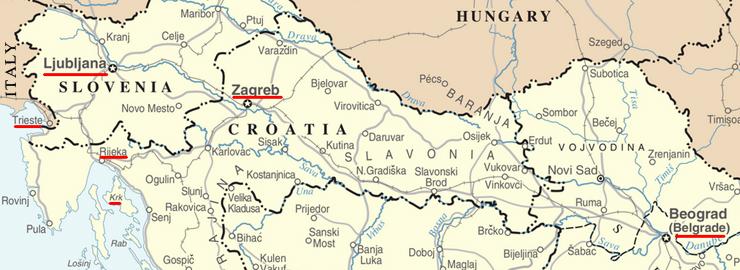Cloud Cover has settings in Italy, Yugoslavia, Libya, Russia, Iran, Canada, and the United States. I was able to visit most of the countries while doing research for the novel, which was written in the early 1980s, before the internet and the many online resources available today.
The novel begins in Trieste, Italy, in 1984 (see the map to the left and above) and has episodes that take place in other Italian cities, primarily Venice, Padua, Ravenna, Perugia, and Florence.
One of the early episodes takes place high above Trieste at the Castle of San Giusto, from where one gets a panoramic view of the bay (photo below).
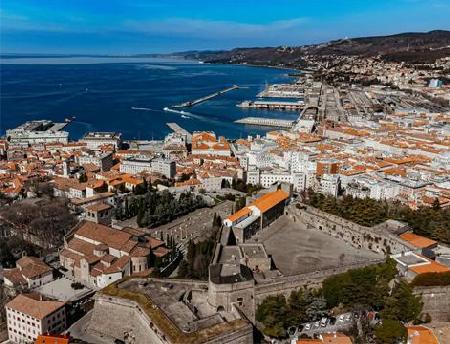
Most of the settings in Yugoslavia are not far across the border from Trieste. They include Rijeka (in Croatia), formerly known by its Italian name as Fiume (ceded by Italy after World War II), Belgrade (Serbia), Zagreb (Croatia), Ljubljana (Slovenia), Ribnica (Slovenia), Čabar (Croatia), the island of Krk (near Rijeka), and the Croatian mountains. I've underlined in red some of those cities in the map at the top of this page.
When I took a bus from Trieste to Rijeka, the passengers were very voluble until we crossed the border, at which time there was dead silence from everyone. And this was four years after the death of Tito! That made me sit up and pay attention!
On the train to Ljubljana late that night, still in the station, two men entered the compartment where I had gladly been the sole occupant until then. They sat side-by-side as far away as possible and started to whisper while shuffling through papers. Just before the scheduled departure, two policemen slid open the compartment's door. They looked quickly at me, clearly a Westerner, and I was reaching for my passport—(I did have the appropriate visa, which I had obtained in the Yugoslav General Consulate in Trieste after an hours' long wait while they examined my passport in another room)—when the policemen stepped beyond me and accosted the two men, who were clearly intitimidated. After an exchange of words, they were pulled off the train in handcuffs. .
I had studied Serbo-Croatian but had only rudimentary skills, so in addition to the fear felt that night, I experienced some trepidation while traveling in the country.
In Cloud Cover, a Russian agent stops in Tomislav Square in Zagreb (seen below). [In the foreground stands an equestrian statue of the King after whom the square is named.]
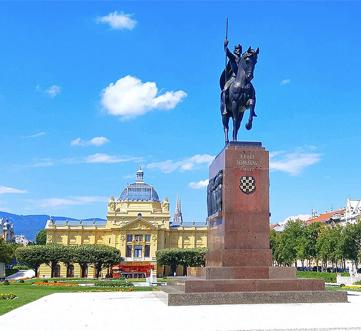
While in Rijeka, the same agent rents a car to drive to the island of Krk, reached from a bridge at Uvala Scott, which you can barely see in the following map (at the top of the island):
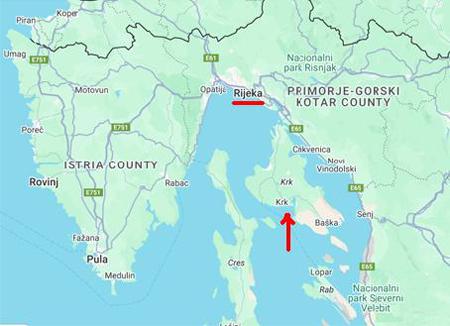
And here is a view of the island, the largest in Croatia (with which I took liberties in Cloud Cover for purposes of the plot):
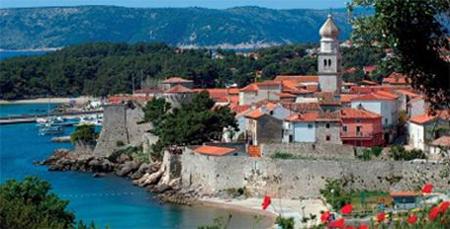
In the 20th century, Yugoslavia underwent several transformations, some of which were anticipated in Cloud Cover, particularly the fragmentation which occurred in 1991-1992. While Cloud Cover was published in 2013, the novel's first draft dates to sometime before 1984. I foresaw the violence and internecine warfare that would tear the country apart several years later.
But what about the formation of the country itself?
When the Habsburg Empire disintegrated at the end of the First World War in 1918, many of the empire’s southern Slav minorities sought the protection of the Serbian throne. In December of that year, they entered into a union under the name of the "Kingdom of Serbs, Croats, and Slovenes."
The name Yugoslavia itself was adopted by the Serbian Monarchy only in 1929. King Alexander I made the change with the goal of resolving ethnic tensions and creating a sense of unity among the various Slavic groups within the kingdom.
The country's second iteration, the Socialist Federal Republic of Yugoslavia, was presided over by Marshal Tito until his death in 1980. That socialist republic, which included six regions—Croatia, Montenegro, Serbia, Slovenia, Bosnia and Herzegovina, and Macedonia—ended in 1991 with the secession of Slovenia and Croatia, followed by declarations of independence by Macedonia and Bosnia-Herzegovina.
I myself once happened to see Tito (surrounded by bodyguards) when he entered a hall in Belgrade where I was reading a paper (incidentally having to do with tyrants in Italian tragedy). This was at the 10th Congress of the Associazione Internazionale per gli Studi di Lingua e Letteratura Italiana, an international conference held in 1979, one year before Tito's death. I know many of the people in the former Yugoslavia still look on him with affection. Although an authoritarian, he did lead the partisans against the Germans in World War II and chose a middle ground in the Cold War between the U.S. and the Soviet Union. Here he is in his official portrait in 1962:
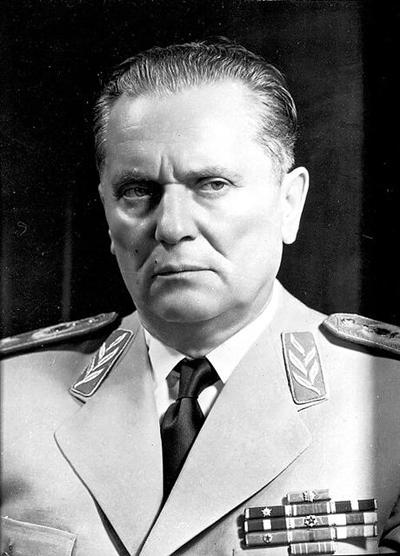
In 1992, Serbia and Montenegro proclaimed the third version, called the Federal Republic of Yugoslavia, which lasted until 2000, at which point the State Union of Serbia and Montenegro (the name after a change in 2003) was dissolved, with Montenegro declaring independence. Serbia continued as an independent state, and Kosovo declared independence in 2008
This map shows the former Yugoslavia from 1991 to around 2000.
|


